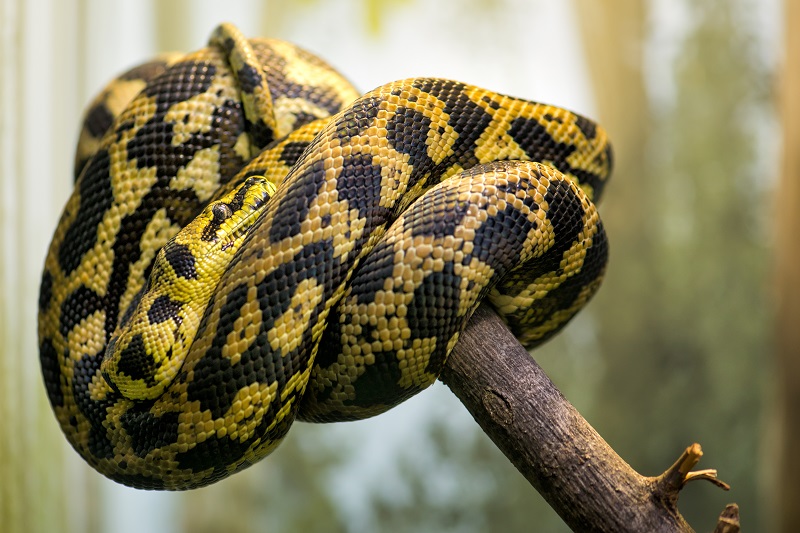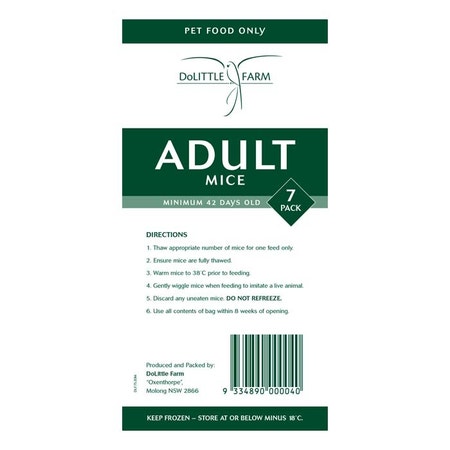Slithery and secretive are common words used to describe snakes. But, did you know, while they can be all these things, they are also known to be some of the warmest and most charismatic animals?

Snake fact file
Life span – Up to 20 years
Size – Up to 100cm
Diet – Mice, rats and quails
Home – 91cm x 45cm x 60cm tank
Care and maintenance
Only needing moderate space to be comfortable, snakes are one of the cleanest, most peaceful and easily maintained pets to look after.
Popular snakes to introduce into your home are snakes located in the Children’s Python group:
Spotted Python: Normally found in North Queensland, they can grow up to 100cm in length and are known for their even temperament.
Children’s Python: Normally found in Northern Australia, they rarely grow to over 1m in length. When exposed to direct sunlight, they can appear to have a rainbow sheen.
Stimson’s Python: Normally found in Western Australia, they can grow up to 102cm and they’re covered in bright red blotches and are known to be the most attractive snake of their group.
Caring for a snake isn’t as challenging as you might think. With a sufficient diet, heat-regulated enclosure and something to coil around, your snake will love their new home.
While their habitat will be monitored giving them specific exposure to heat and light, your snake may still go into brumation. This is the equivalent of hibernation, where colder weather means they become dormant for weeks or even up to eight months. While their home isn’t cold, it is a natural process that still may occur. Your snake will become less active, sleep a lot more and eat less.
Licensing
In order to house a snake, you must register with your local government by applying for a ‘Companion Animal Keeper Licence’. Find the relevant information on their website. For example in NSW, the ‘Code of Practice for the Private Keeping of Reptiles’ keeps you up to date with the rules and regulations. You can then apply for your licence online. Learn more about Reptile licenses in Australia in our handy guide.
Setting up
When choosing a terrarium, consider the size of your snake when it is full grown. Bark mulch, dry leaves, rolled corrugated cardboard, sand or newspaper are comfortable options for a substrate. Provide branches, rocks and logs for your snake, too.
Unlike most reptiles, pythons may not necessarily benefit from UVB lights to assist in nutrient synthesis, especially if their habitat is located in an area with natural sunlight and reduced shade. Some breeds tend to bask throughout the year. Ask your local Petbarn team member to see whether your pet will need extra lighting in their habitat.
Use a heat map or ceramic heat emitter to maintain a temperature of 32–35°C. Heat one-third of your enclosure so your snake can cool down if they want to. Your local Petbarn team member can advise you on the right heating options and how to set up a thermostat. Disinfect your terrarium at least once weekly (use household bleach diluted 1:10 with water and rinse well afterwards) and spot clean as necessary. Always wash your hands before and after handling.
Feeding
Snakes are carnivores, meaning they only eat meat. Your snake will love a varied diet of mice and birds. Visit your local Petbarn to find frozen mice and quails for your pet.
Don’t worry if your snake is leaving food – snakes have a slow metabolism and don’t need much to sustain themselves. In fact, snakes have been known to leave food for months on end. And, if experiencing brumation, years!
Health care
As long as your pet has a clean habitat, access to fresh water and is fed a proper diet containing all the required vitamins and nutrients, the likelihood of illness or disease is low. In saying this, it’s still important to know the warning signs in case your snake gets ill. Annual check-ups at your local Greencross Vets are required.
Stress can be common in domestic pythons due to their abnormal living conditions. Lethargy, jerky movements and loss of appetite are all symptoms of a stressed snake. To reduce stress, and lower risk of disease, keep your snake habitat as natural as possible, providing hiding places and the right levels of light and heat.
Snakes are susceptible to a range of diseases. Check your snake for signs of a swollen jaw, discoloured patches, blisters, burns or abscesses, cloudy or swollen eyes. If you notice any symptoms or significant changes in your snake don’t hesitate to refer to your local Greencross Vets to get your pet the treatment they need.
Pet safety tips
Snakes can pick up peculiar habits due to stress. One interesting thing snakes tend to do when arriving to their habitat is coil up in their water bowl and refuse to move. It’s fine to leave your snake be for a week, but after this make sure to remove them from the water bowl so they’re forced to familiarise themselves with their new home.
Some snakes can have sensitive stomachs especially when they’re stressed. Leave them be for at least five days after they enjoy a big meal. If handled immediately after eating, they might get snappy or regurgitate their food.
Tip: Be sure to check your heat lamps every month
Snake checklist
Shop all your snake supplies online or in-store at Petbarn, including frozen mice and rabbits.
Housing
- Terrarium
- Substrate
- Heat map or lamp
- Thermostat
- UVB light
- Water dish
- Branches
- Rocks
- Hide-out
Food
- Mice, rats & quails
Travelling
- Cloth bag
- Ventilated box/container






